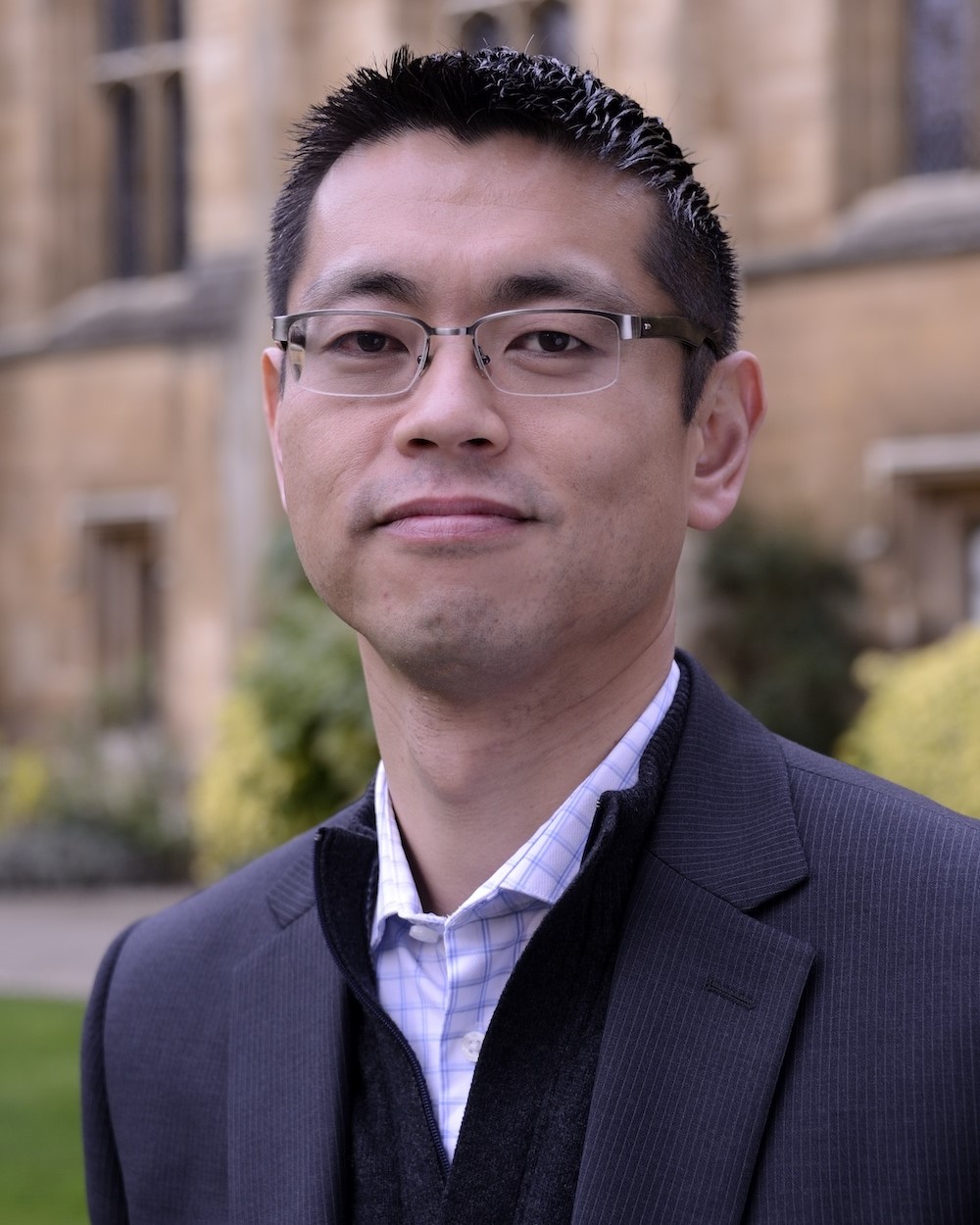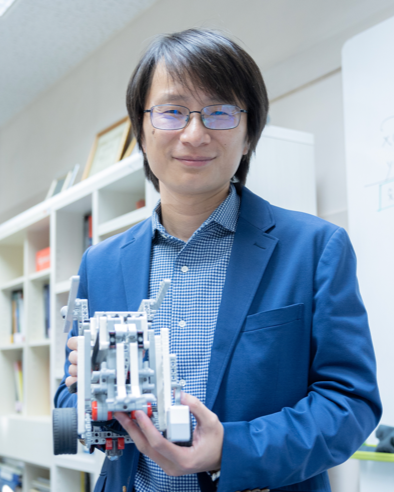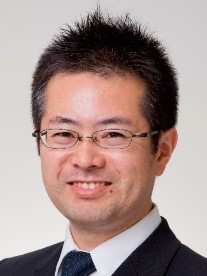Keynote Speaker
TBA
ICRAS 2025 Keynote Speakers
Prof. Pietro Valdastri, University of Leeds, UK
Bio: Pietro Valdastri is Full Professor and Chair in Robotics and Autonomous Systems at the University of Leeds. He directs the Science and Technologies Of Robotics in Medicine (STORM) Lab, focusing on intelligent robots to fight cancer, the Institute of Robotics, Autonomous System and Sensing (IRASS), and the Robotics at Leeds network. He received his Laurea degree in Electronic Engineering from the University of Pisa in 2001 and his PhD in Biomedical Engineering from Scuola Superiore Sant’Anna in 2006. After the PhD, he became Assistant Professor in Biomedical Engineering at the BioRobotics Institute of Scuola Superiore Sant’Anna. In 2011, Prof Valdastri moved to Vanderbilt University as an Assistant Professor in Mechanical Engineering until 2016, when he relocated to Leeds.
He has published more than 150 peer reviewed journal papers in the field of medical robotics and has been principal investigator on grants in excess of $24M supported by NSF, NIH, ERC, EU-H2020, Cancer Research UK, The Royal Society, EPSRC, Innovate UK and industry, including the NSF CAREER Award with the proposal “Lifesaving Capsule Robots” in 2015, the ERC Consolidator Grant Award with the proposal “NoLiMiTs – Novel Lifesaving Magnetic Tentacles” in 2019, and the KUKA Innovation Award for his robotic colonoscopy platform in 2019. Prof. Valdastri is a Royal Society Wolfson Research Fellow, a Fellow of the Institute of Electrical and Electronics Engineers (IEEE), the Editor for Medical and Rehabilitation Robotics of the IEEE Robotics and Automation Letters, and a member of the steering committee of the International Society for Medical Innovation and Technology (iSMIT). STORM Lab’s research has been featured by several news outlets, including the BBC, The Times, The Washington Post, The Financial Times, Bloomberg, New Scientist, The Spectator, WIRED, IEEE Spectrum, Medgadget, Daily Mail, The Engineer, Ingenia Magazine, Medical Design Technology Magazine, Medical Xpress, Newswise, NSF Science Now. Prof Valdastri also completed a successful entrepreneurial cycle with WinMedical s.r.l., a company he co-founded in 2009 and that was acquired by a larger enterprise in 2017. He recently started a new company, Atlas Endoscopy Limited, to bring his robotic colonoscopy platform to patients.
Speeech Title: Magnetic Surgical Robots: A “Fantastic Voyage” deep inside the human body
Abstracr: Magnetic fields offer the possibility of manipulating objects from a distance and are ideal for medical applications, as they penetrate human tissue without inflicting any harm on the patient. Magnetic fields can be harnessed to actuate surgical robots, enhancing the capabilities of surgeons in reaching deep into the human anatomy through complex winding pathways, thus providing minimally invasive access to organs that are out of reach with current technologies. In this talk, we will explore various robotic architectures based on magnetic control, specifically designed for lifesaving clinical applications. These architectures include a magnetic flexible endoscope for painless colonoscopy, soft magnetic tentacles personalized for reaching peripheral areas of the lung and navigating the pancreatic duct, magnetic vine robots for endoluminal exploration, and magnetic “fusilli” robots designed for collaborative bimanual tasks in a confined workspace. We will also discuss enabling technologies, intelligent control, potential levels of computer assistance, the path to first-in-human trials, and highlight the future challenges associated with this ongoing Fantastic Voyage.
Prof. Fumiya Iida, University of Cambridge, UK
Bio: Fumiya Iida is a Professor o Robotics at Department of Engineering, University of Cambridge, the director of Bio-Inspired Robotics, and a Global Fellow of the University of Tokyo. He received his bachelor and master degrees in mechanical engineering at Tokyo University of Science (Japan, 1999), and Dr. sc. nat. in Informatics at University of Zurich (2006). In 2004 and 2005, he was also engaged in biomechanics research of human locomotion at Locomotion Laboratory, University of Jena (Germany). From 2006 to 2009, he worked as a postdoctoral associate at the Computer Science and Artificial Intelligence Laboratory, Massachusetts Institute of Technology in USA. In 2006, he awarded the Fellowship for Prospective Researchers from the Swiss National Science Foundation, and in 2009, the Swiss National Science Foundation Professorship for an assistant professorship at ETH Zurich from 2009 to 2015. He was a recipient of the IROS2016 Fukuda Young Professional Award, Royal Society Translation Award in 2017, Tokyo University of Science Award in 2021. His research interest includes biologically inspired robotics, embodied artificial intelligence, and biomechanics, where he was involved in a number of research projects related to dynamic legged locomotion, dextrous and adaptive manipulation, human-machine interactions, and evolutionary robotics.
Speech Title: Info-bodiment: Informationalization of robot embodiment for the next generation AI Robots
Abstract: There is growing interest in applying AI technologies to the control of intelligent robotic systems. While this research has led to promising developments, it still faces major challenges due to its heavy reliance on learning from limited datasets—often dominated by visual information. In this talk, I will introduce "Info-Embodiment" as a new research framework for realizing Embodied Intelligence, along with its underlying technological foundations. As advances in soft robotics and functional materials enable deeper integration between the informational and physical realms, we are beginning to see the emergence of novel forms of embodied intelligence. Within this evolving landscape, I will explore how rapidly advancing fields such as machine learning can help accelerate progress. Going beyond conventional models of body control and AI as abstract computational systems, this approach positions the body itself as an active site of information processing and generation, opening new possibilities for intelligent behavior.
Prof. Kai Cai, Osaka Metropolitan University, Japan
Bio: Kai Cai received the B.Eng. degree in Electrical Engineering from Zhejiang University, Hangzhou, China, in 2006; the M.A.Sc. degree in Electrical and Computer Engineering from the University of Toronto, Toronto, ON, Canada, in 2008; and the Ph.D. degree in Systems Science from the Tokyo Institute of Technology, Tokyo, Japan, in 2011. He is currently a Professor at Osaka Metropolitan University. Previously, he was an Associate Professor at Osaka City University (2014--2020), an Assistant Professor at the University of Tokyo (2013--2014), and a Postdoctoral Fellow at the University of Toronto (2011--2013).
Dr. Cai's research interests include discrete-event systems, cyber-physical systems, and networked multi-agent systems. He is the author of “Invitation to Supervisory Control” (KDP 2024), co-author (with Z. Lin) of “Directed Cooperation”, co-author (with W.M. Wonham) of “Supervisory Control of Discrete-Event Systems” (Springer 2019) and “Supervisor Localization” (Springer 2016). He is serving as a Senior Editor for Nonlinear Analysis: Hybrid Systems and an Associate Editor for IEEE Transactions on Control of Network Systems. He served as the Chair for the IEEE CSS Technical Committee on Discrete Event Systems (2020~2024) and an Associate Editor for the IEEE Transactions on Automatic Control (2018~2024). He was the recipient of the Pioneer Award of SICE in 2021, the Best Paper Award of SICE in 2013, the Best Student Paper Award of the IEEE Multi-Conference on Systems and Control, and the Young Author’s Award of SICE in 2010.
Speech Title: Types of Graph Laplacian Matrices and their Roles in Cooperative Control of Multi-Agent Systems
Abstract: In Systems Control and Robotics, many cooperative control problems of multi-agent systems have been actively studied in the past decades. Common in the formulation and resolution of these problems, a graph Laplacian matrix plays a key role. A graph Laplaican matrix is an important representation of graph topology, which describes the interconnection structure of the agents. Depending on the field of the entries, there are three types of Laplacian matrices: standard Laplacian (nonnegative diagonal entries and nonpositive off-diagonal entries), signed Laplacian (arbitrary real entries), and complex Laplacian (arbitrary complex entries). This talk will introduce these different types of Laplacian matrices, and their roles in modeling and solving different sets of cooperative control problems. Particular attention will be given to their algebraic properties that are fundamental in characterizing stability and performance of the respective solution algorithms.
Prof. Tetsuyou Watanabe, Kanazawa University, Japan
Bio: Tetsuyou Watanabe is a professor with Kanazawa University. He received the B.S., M.S., and Dr.Eng. degrees in mechanical engineering from Kyoto University, Kyoto, Japan, in 1997, 1999, and 2003, respectively. From 2003 to 2007, he was a Research Associate with the Department of mechanical Engineering, Yamaguchi University, Japan. From 2007 to 2011, he was an assistant professor with Division of Human and Mechanical Science and Engineering, Kanazawa University. From 2011 to 2018, he was an associate professor with Faculty of Mechanical Engineering, Institute of Science and Engineering, Kanazawa University. Since 2018, he has been a professor with Kanazawa University. From 2008 to 2009, he was a visiting researcher at Munich University of Technology. His current research interests include robotic hand, grasping, object manipulation, medical and welfare sensors, surgical robots, and user interface. He got several awards including best paper award at Transactions of the Society of Instrument and Control Engineers and World Robot Summit Second Prize of World Robot Challenge Industrial Robotics Category Second Prize of World Robot Challenge Industrial Robotics Category.
Speech Title: Minimalism in Robot Design and Applications
Abstract: With the declining birthrate and aging population, the utilization of robots in living spaces and the drive for labor-saving and automation are increasingly demanded. Among these technologies, robotic hands, which are responsible for executing physical tasks, play a particularly vital role, requiring functionality comparable to that of the human hand. From the perspective of practical use and maintenance, however, systems that rely on numerous sensors, actuators, or complex mechanisms are not ideal. Instead, simpler configurations are preferable. We have developed a variety of robotic hands based on the concept of minimalism, where multiple functions are achieved with a single actuator. In this talk, I will introduce robotic hands we have developed that embody both high versatility and minimal design. Furthermore, I will present examples of how this approach has been applied to other robotic systems, including assistive robots.



